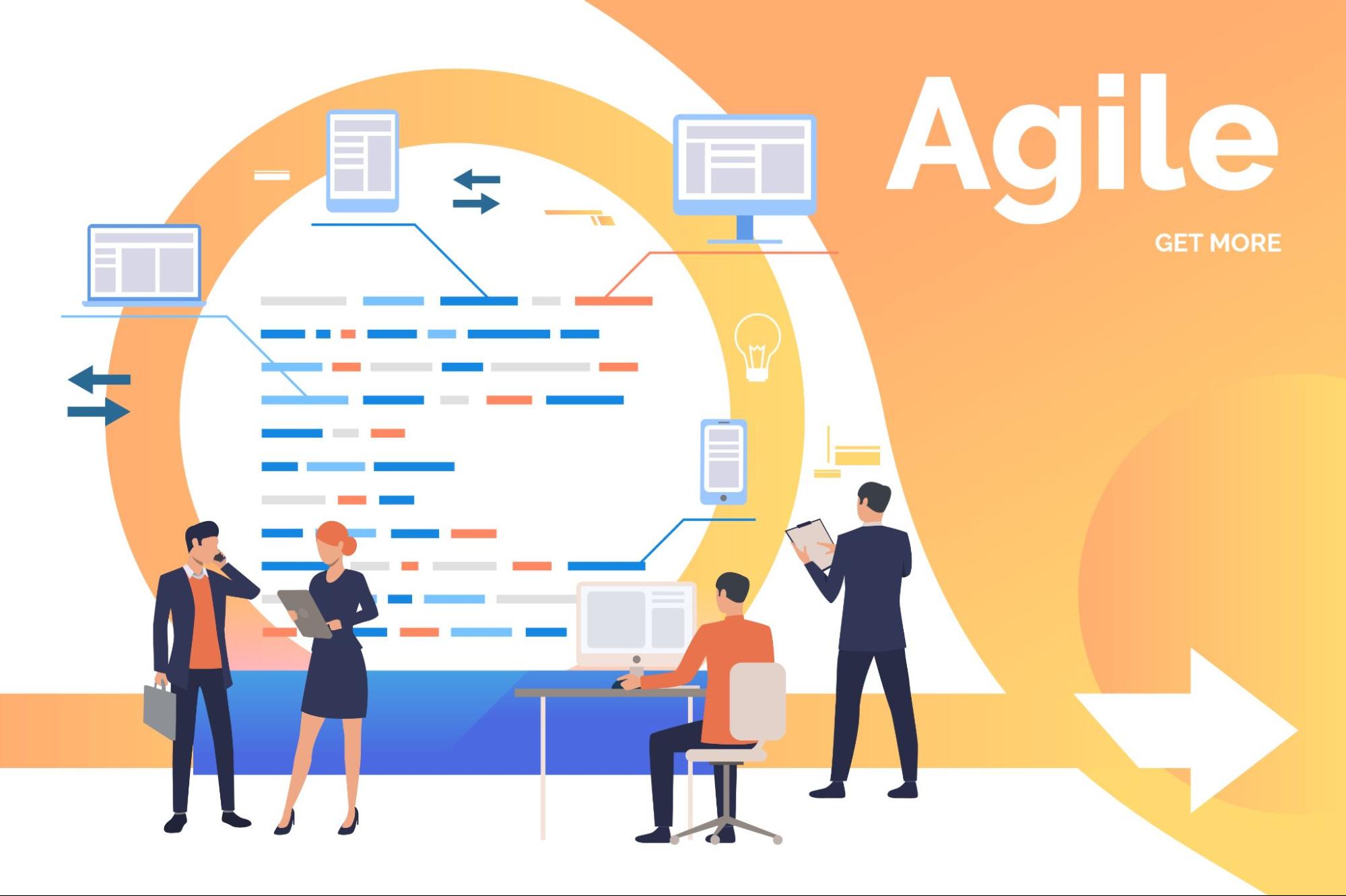The early 2000s marked a significant shift in software and product development with the widespread adoption of agile methodology. This innovative approach revolutionised the industry by emphasising iterative progress, collaboration, and flexibility. However, it soon became evident that the operations team responsible for deploying and managing software products was not included in this transformation. This gap led to the emergence of DevOps, a methodology designed to bridge the divide between development and operations teams.
So, does DevOps replace Agile, or do they work together? The answer lies in understanding their differences and similarities. Agile development vs DevOps can be seen as both distinct and complementary methodologies, often coexisting within an organization.
What is Agile?

Agile is a dynamic approach to project management and software development that prioritises collaboration, customer feedback, and rapid iteration. Emerging in the early 2000s, Agile transformed the software development industry by enabling teams to adapt to changing market conditions and customer demands quickly.
In Agile, while some initial planning and design are performed, the development process unfolds in small, manageable increments. This iterative method encourages close collaboration with stakeholders, allowing for continuous incorporation of changes and frequent releases of usable product versions. Compared to the traditional waterfall methodology, Agile typically delivers products faster and more responsively. One of its key advantages is the ability to quickly address and remediate any shortcomings in the software based on customer feedback.
Agile is not a single methodology but a collection of various approaches, including Scrum, Extreme Programming (XP), and other practices. Practitioners united these methodologies into a cohesive set of principles known as the Agile Manifesto. The Agile Manifesto, created through this collaborative effort, outlines 12 guiding principles rooted in four core values, forming the foundation of the Agile approach.
Agile's emphasis on iterative progress, stakeholder engagement, and adaptability has made it a preferred methodology for many development teams seeking to deliver high-quality software in a rapidly evolving environment.
The Four Core Values of the Agile Manifesto

People and Interactions Over Processes and Tools
Prioritising direct communication and collaboration among team members rather than relying solely on processes and tools.
Functional Software Over Extensive Documentation
Focusing on delivering software that works rather than getting bogged down in lengthy documentation.
Customer Collaboration Over Contract Negotiation
Emphasising ongoing engagement and cooperation with customers instead of rigid contract terms.
Adapting to Change Over Following a Plan
Valuing the ability to adapt to changes quickly rather than strictly adhering to a predefined plan.
Understanding DevOps

DevOps is a methodology that enhances software development by enabling teams to build, test, and release software more quickly and reliably. By integrating Agile principles, DevOps emphasises increased automation and improved collaboration between development and operations teams. While Agile focuses on development and testing, DevOps extends this to include operations, ensuring a seamless process from creation to deployment.
The primary objective of DevOps agile is to unite developers, who write the software, with operations, who run it in production and maintain the necessary infrastructure. This approach replaces the outdated method where development teams created applications and then handed them off to operations for deployment and management, often with little understanding of the development process. In a DevOps environment, developers and operations work together throughout the entire lifecycle of an application, from development to deployment and ongoing management.
Two widely recognized frameworks for understanding DevOps are the "Three Ways" and "CALMS."
The Three Ways: This framework focuses on:
- Flow: Ensuring smooth progress of work through the development pipeline.
- Feedback: Establishing a feedback loop to detect and resolve issues early.
- Continuous Learning and Experimentation: Encouraging innovation and learning from failures.
CALMS: An acronym representing
- Culture: Fostering a collaborative culture where development and operations work cohesively.
- Automation: Increasing speed and ensuring higher quality through automated processes.
- Lean: Embracing continuous improvement and learning from failures.
- Measurement: Using metrics to evaluate and enhance processes.
- Sharing: Promoting collaboration and the adoption of best practices across teams.
The DevOps Agile Three Ways
Systems Thinking
Recognizing that software applications are intricate, interconnected systems that require a holistic understanding to manage effectively.
Amplifying Feedback Loops
Enhancing communication in both directions among team members to quickly identify and address issues, fostering a more responsive and adaptive workflow.
Cultural Change
Cultivating a culture of continuous experimentation and learning, where innovation is encouraged and failures are viewed as opportunities for growth and improvement.
When Do DevOps vs Agile Development Work Together?
DevOps can be seen as an evolution of Agile practices, extending the principles of Agile into operations processes. It fills the gap in Agile by addressing the needs of deployment and maintenance, thereby completing the cycle of continuous improvement.
Agile methodologies, particularly Scrum, emphasise continuous delivery and frequent iterations. However, true continuous delivery, which includes deployment and operations, is often considered a DevOps practice due to its focus on the entire delivery pipeline. This pipeline integrates development and operations, ensuring seamless transitions from code creation to production.
DevOps agile also amplifies feedback loops by fostering enhanced communication across and between teams. Agile supports this through various ceremonies, such as daily standups, planning meetings, and retrospectives, which promote regular and structured communication. By combining these Agile practices with DevOps principles, teams can achieve more efficient and reliable software delivery, continuous improvement, and better collaboration across the entire development lifecycle.
Similarities and Differences Between Agile Development vs DevOps
Collaboration Focus
- Agile: Emphasises collaboration between developers and product management.
- DevOps: Expand collaboration to include the operations team, fostering a more integrated approach.
Scope of Focus
- Agile: Centers on the flow of software from ideation to code completion.
- DevOps: Extends the focus to encompass delivery, deployment, and maintenance.
Development Practices
- Agile: Emphasises iterative development and working in small batches.
- DevOps: Focuses on automating testing and delivery processes to ensure continuous integration and deployment.
Work Structure
- Agile: Adds structure to planned development work, organizing tasks and priorities for developers.
- DevOps: This approach incorporates unplanned work common to operations teams while maintaining flexibility to address issues as they arise.
The Agile Manifesto prioritises individuals and interactions, working software, customer collaboration, and responding to change. DevOps shares these priorities but extends them beyond the development process to include the management and operation of systems and running applications, ensuring a more holistic approach to software lifecycle management.
In Conclusion: DevOps vs Agile Development
Ultimately, the goals of Agile and DevOps converge on improving the speed and quality of software development. Discussing one without the other often misses the bigger picture, as they complement each other seamlessly. While many teams have experienced significant benefits from Agile methodologies, others have struggled to realize its full potential. This struggle can stem from a variety of factors, such as a lack of understanding or improper implementation of Agile practices. Incorporating a DevOps approach can bridge these gaps, providing the necessary support for organizations that face challenges with Agile alone. By integrating DevOps, teams can achieve the success they aspire to, leveraging the strengths of both methodologies for a more effective and cohesive development process.




